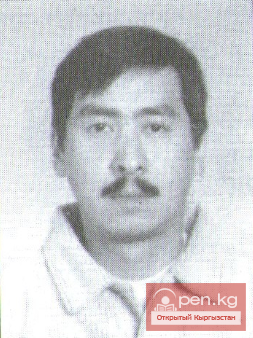The Kyrgyz Republic is a country of Heavenly Mountains, stunning nature, and hospitable,...

From May 28 to June 5, 2015, a youth festival "Kyrgyz-American Hip-Hop Fest 2015" will...

Historical-Architectural and Modern Attractions, as well as Natural-Ecological Complexes Cities...

We present to you the first Kyrgyz perfume "Aigul" from the series "The Fragrances...

Avdotka Status: V category, Vulnerable, VU: R, A1. At the same time, according to information from...

Natural and ecological complexes: Shamsi Natural Complex Ala-Archa National Park Chon-Kemin Zone...

In the history of the 16th century, Tagay Bi was celebrated under the name of the great figure...

Kyrgyzstan has been included in the top twenty tourist destinations of 2016 by National Geographic...

On April 16, 2014, a press conference was held at the "Kabar" news agency regarding the...
Ordo Sakhna – The Folk Ethnographic Theater. Biography. The folk ethnographic theater Ordo Sakhna...
No one has seen Kyrgyzstan from such angles before. YouTube user Alexey Nikitin published a video...

Kyrgyzstan has once again become a priority for Russian tourists. This year, the republic won in...

Ibisbill Status: V category, Vulnerable, VU: R, D1. A small number of stenobiont species, at risk...

On May 31, the "International Heritage" festival will take place in New Jersey (USA)....

Lynx Status: V! category, Nearly Threatened, NT. A rare subspecies Lynx lynx isabellinus Blyth,...

A very sad young man approached the wise elder. - Help me, elder. I have a yurt, but my family is...

Indian Crested Porcupine Status: Category VII, Lower Risk/least concerned, LR/lc, poorly studied...

Sievers’s Apple-tree Status: LC category. A polymorphic species of the mountain-central Asian...
Kyrgyzstan is a small country bordering Uzbekistan, Kazakhstan, and Russia. The main attractions...

On May 17, a parade of Turkic peoples will take place in New York. This parade has been one of the...

Kyrgyz Trans Avia airline operates charter flights (international)....

Mamyotov Abakir (1954), Doctor of Pedagogical Sciences (1999), Professor (1993) Kyrgyz. Born in...

Sadzha Status: V category, Vulnerable, VU: R, Monotypic species....

Noble deer (Tien Shan subspecies), Maral Status: Category IV, Endangered, EN C2a(i): R. A sharply...

International Dog Show "Kyrgyzstan Cup". September 28. 73a Brick Street, Red Cross...

Ballet "Selkinchek" The production of "Anar" marked the beginning of the...

Asian Paradise Flycatcher Status: VI, Near Threatened: NT: R. One species of the Monarchidae...

Bishkek resident Nursultan Alibekov won the online voting of the "Guy of the Month"...

Black Grouse Status: Category VI, Near Threatened: R. The subspecies L. t. mongolicus (Lonnberg,...

Kyrgyzstan has become the undisputed leader of the National Geographic Traveler Awards 2014 in the...

Asian Barbastelle Status: VI category, Near Threatened, NT: R....

Manul Status: VI category, Near Threatened, NT. Rare species throughout its range....

Resettlement of the Kyrgyz to the Yenisei. The early medieval population of the Yenisei was...

Common Water Shrew Status: Category VI, Near Threatened, NT: R. A rare species for Kyrgyzstan,...

Seitaliev Adil Keneshbekovich Sculptor. Born on July 13, 1967, in the city of Frunze. In 1986, he...

Tashtanbek Akmatovich Akmatov — Kyrgyz state and political figure. He was born in September 1938...

Jusup Mamai, the Great Narrator of the Epic "Manas" He was born on May 4, 1918, in the...

Nifadyov Vladimir Ivanovich (1947), Doctor of Technical Sciences (1993), Professor (1995),...

The King of Ghana, Otumfuo Osei Tutu II, was fed with Kyrgyz boorsoks in the USA. The crowned...

Osmonkul Aliyev (1903-1938) was born in the village of Choloq-Aryk in what is now the Panfilov...

Snow Leopard Status: III. Critically Endangered, CR C2a(i): R, C1....

Kurmanbek Arykov, installer of steel and reinforced concrete structures at JSC...

html Turkestan Catfish Status: 2 [VU: E]. The only representative of the genus in...

Amazon-Rossomyrmex Status: Category II (VUB2ab(iii); C2b; D2). A rare relict representative of the...

Saturday Events in Bishkek "Culture" Summer Edition. For those tired of the heat, 191Bar...

Kagan Barsbek. Central Asia at the end of the 7th century became the arena of significant...

Mineral Resources of the Republic of Kyrgyzstan The subsoil of Kyrgyzstan is truly a gigantic...